Captain Larraq
Capitalist
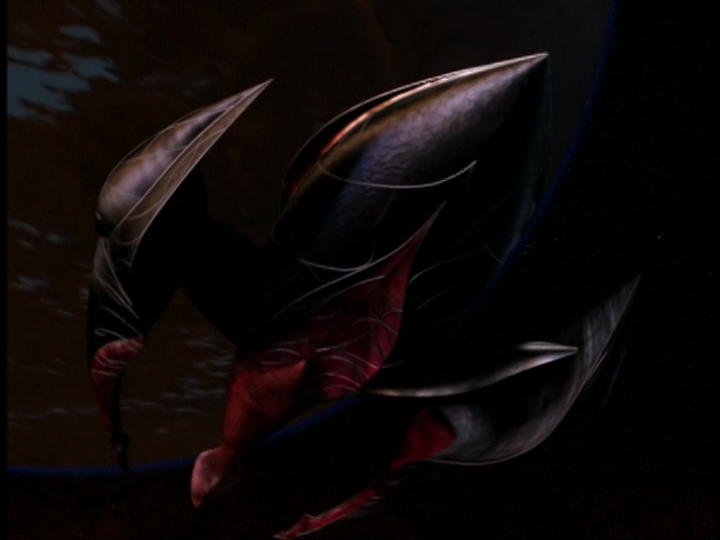
Name: Prowler-class Mesen'loras (Flesh Starship)
Designation: Sentient
Homeworld: Ord Cestus
Language:
Conveys concepts and emotions
Understands most common languages
Average Length of Adults: Unknown. Current ships have yet to reach full maturity.
Skin Color: Reds, Black, and Tan colorations
Hair Color: NA
Breathes: NA
Average Lifespan: Estimated in the hundreds of years.
Races: Cybernetic and Non-Cybernetic
(Later possibilities for Vong Enslaved, Sith Spawned, and other variants may present themselves through roleplay)
Estimated Population: Only a handful are known to exist
Diet: Absorbs stellar radiation from Gas Giants and Stars
STRENGTHS
+ Natural and Cybernetic Stealth
+ Natural and Cybernetic Defenses
+ Cybernetic Modifications
+ Engineered to be nearly perfect
WEAKNESSES
- Easily enslaved
- Limited communication options
- Highly reliant on a crew to operate
- Small size (in comparison to capital ships)
- Extremely low population
- Slow rate of reproduction
DISTINCTIONS
Fully sentient, the Prowler-class Bio-Mechanical starship is designed to be the ultimate organism. Unfortunately, its intelligence and mannerisms are equated to that of a moody teenager. Designed by Mandal Hypernautics and their genetic subsidiary, Auron Helix, the Prowler is a revolutionary bio-ship unlike anything seen before. It is a conglomeration of Quella, Charon, and Yuuzhan Vong bio-engineering and most are cybernetically augmented by Mandal Hypernautics engineers.
As an engineered species, Prowler DNA is copyrighted by Mandal Hypernautics. The creature is characterized by an triangular prow section flanked by two nacelle, each ending in a semi-flexible Etheric Rudder. Prowlers are highly emotional beings and will 'sing' when happy or depressed by resonating on subspace frequencies. These songs are often considered to be both haunting and beautiful by the few individuals to have heard these calls and are said to resonate weakly in the force.
The bio-ship is propelled similarly to Yuuzhan Vong Coral Ships. The creature was engineered to possess a cluster of symbiotic Dovin Basal Biot's organized into a Neuroengine that serves as a type of organ for the Prowler. This Neuroengine, like all the symbiotic and cybernetic enhancements worked into this creature, is linked directly into the central nervous system of the bio-ship and is usable to the creature like any other part of its body. With this 'organ', a Prowler is effectively able to drag itself through space without the need for mechanical thrusters or conventional fuel. Unlike the Yuuzhan Vong Coral Ships, however, the Prowler is significantly more agile.
The tail of the ship, along with the port and starboard nacelle, ends in an organic structure engineered to function identically to an Etheric Rudder. The few pilots who have attempted direct control of a Prowler have described the design as “driving a front wheel drive vehicle with rear wheel handling.” While pilots typically find the experience awkward, the bio-ship is capable of extremely agile movements for a ship of its size. That, combined with the unique nature of the propulsion system, makes targeting the ship annoyingly difficult. Gunners and commanders alike have complained that “It just doesn't move right.” after attempting to engage a Prowler in testing operations.
Prowler Bio-mechanical ships are capable of entering the atmosphere of all but High Gravity worlds. While the ship may lack repulsors, the vessel is able to utilize its Dovin Basal's to create a gravity well directly above itself, thus negating the pull of the planet. This allows the ship to hover in place and move about as needed, but does come at the cost of reduced overall maneuverability while within atmosphere. Similarly, Prowlers are capable of entering the oceans of most worlds and find the experience to be quite enjoyable. Engineered from Lygria DNA, Prowlers have a great many similarities to aquatic species and are capable of surviving the crushing depths of most oceans. It is estimated that a Prowler can survive depths of nearly thirty thousand kilometers below sea level, however no current testing has been done to establish this as fact. While this would allow a Prowler to theoretically explore the deepest parts of most terrestrial planets, it comes up short when compared to the massive oceans of aquatic worlds like Dac or Manaan.
The Prowler is capable of performing a natural hyperspace jump via a technique refered to as a 'starburst.' The exact nature of this ability is unknown or simply not fully understood to any but the Quellan scientist that studied the recovered Charon data. Though the technique seems to produce a less accurate hyperspace travel than conventional means, the Prowler and its Navibrain seems to have an instinctual understanding of how to travel to their intended destination. While the added benefit of being harder to track and detect than the hyperspace travels of conventional ships, there are other limitations to the technique. For starters, starbursting is rather exhausting for the bio-ship. A Prowler can only sustain a single starburst for long enough to travel a single galactic unit (one hex) at a time. Upon returning to realspace, a Prowler will then have to rest for twelve to fifteen minutes to recover its strength before making another jump. If particularly exhausted, it could take as long as twenty or thirty minutes. Moreover, it takes the bio-ship several minutes to find a hyperspace route that 'feels right' for a starburst. Humanoid crew can aid the bio-ship in this regard by providing secondary telemetry and using existing star charts, but the end result is a means of travel that is statistically slower and less reliable than traditional travel.
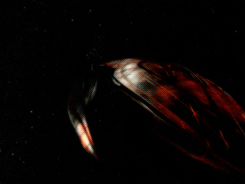
A starburst is significantly harder to detect via traditional sensors and biological sensors alike, which allows a Prowler-class Bio-mechanical ship to enter or exit a system with little fear of detection. Similarly, its audio, radio, radiation, heat, and electronic emissions are significantly lower than a similar ship of its size, making it a difficult ship to detect at all. This natural advantage is further augmented by a coating of sensor dampening Reflec polymer added to the armor of the ship. Sound dampening systems, organic thermal regulators, degaussing techniques, and a Gravitic Modulator further enhance the passive stealth of this ship and make it extremely hard to detect on sensors. The one area where the Prowler suffers in overall stealth capability is when it comes to gravimetric sensors. The nature of its propulsion systems cause the Prowler to register as a ship ten times its actual size on gravimetric sensors. A technique used by the Prowler and her crew to counter this vulnerability is to accelerate to optimal speeds while still well outside standard sensor ranges and then 'coast' the rest of the way forward, using the ship's Etheric Rudders to maneuver.
The Prowler Bio-ship is capable of naturally emitting its own Hydrostatic shield around itself. This shield, similar to the Gungan Shield Generator, is capable of protecting the ship from radiation and other environmental hazards of space just as well as energy based weaponry, and protects the bio-ship from the effects of the Dovin Basal symbiots that propel it through space. When assaulted by energy based weaponry, the shield deflects the attack, instead of simply stopping or absorbing it as other shields would. While this typically results in a ricochet-type effect, it is possible for direct hits to be deflected back onto the firing ship at point-blank ranges.
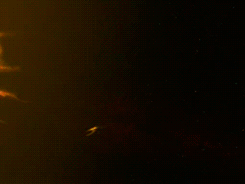
The ship requires no true fuel. Instead, the ship simply needs to occasionally spend a period of time close to a star or gas giant. While in close proximity to one of these stellar bodies, the Prowler will absorb radiation given off by the celestial body as sustenance. This can occasionally be dangerous if the bio-ship gets too close to the gas giant or star. Should the ship get too close to a gas giant, it may find itself unable to escape the intense gravity of the planet and sink to its death. A Prowler that ventures too close to a star will suffer shield failure and burn to death long before the strength of the object's gravity overwhelms what the ship is capable of producing with its Neuroengines.
As an engineered species, touched by the hand of the 'Vong, it is natural to assume that the creature would be Force Dead. In fact, that was an intended aspect of the design. However, the bulk of the bio-ship is made up of organic and cybernetic technology unrelated to more familiar Biots of the Vong. While Prowlers are incredibly resilient to force based interference, particularly powerful individuals can still detect and effect a Prowler or communicate with it via Force Telepathy. Similarly, the creature is not truly of Vong in origin. Though Yammosk's are capable of communicating with a Prowler, the interactions are strange for both species. The Prowler typically finds the Yammosk to be creepy and bossy. The Yammosk finds the Prowler to be chaotic and unrully, constantly rebelling and questioning.
Prowler Bio-mechanical ships are designed to be capable of procreating, though it is currently unknown at what age Prowler's reach sexual maturity. The ships, theoretically, are capable of coupling with one another via a tentacle-like docking tube to exchange genetic information. The female Prowler, while incubating, suffers a small reduction in hanger space as a separate compartment is grown to house the fetal Prowler. Incubation is theorized to take anywhere between six months to two years, at the end of which a young Prowler will be released into the primary hanger. Newborn Prowlers are roughly the size of a shuttle and lack all cybernetic systems. A Prowler cannot support a crew until it is roughly three years old and eighty meters long. Young Prowler bio-ships typically stay close to their mothership until they are large enough to support their own crew.
A pair of mating Prowlers


A Developing Prowler Fetus

A Prowler being Born

A Prowler being Born
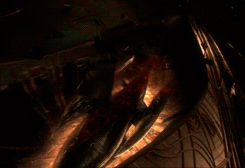
COMMUNICATION
The bio-ship is capable of hearing and understanding most verbal interactions that take place within its hull or received via communicator. Prowlers hear those on the bridge louder than anywhere else on the ship, with the exception of the pilot's den. The ship is unable to verbally or telepathically communicate with individuals of its own accord, but many have learned droidspeak and dadita and will 'beep' in response to communications with onboard crew. Particularly powerful telepaths are able to communicate with the bio-ship, as well as Yammosks. A direct neural interface is possible between a Prowler and a trusted captain or pilot. A Prowler does not so much as understand language as it understands the concepts and emotions behind them. Even through use of digital or biot communicators, a Prowler is only able to communicate in an empathic manner. When communicating via droidspeak or dadita, a Prowler is typically only able to express agreement or disagrement, excitement or worry, and happiness or sadness.
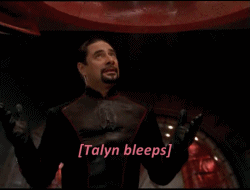
CULTURE
Most existing Prowlers are engineered to mesh with the warrior culture of the Mandalorians. Though they have no culture of their own, the species has thus far been highly accepting of a wide assortment of cultures but will predominantly adopt the culture of those the bio-ship allow to perform a neural link with it.
It is suspected that, should a natural herd of Prowlers eventually become a reality, that the pod will adopt a social structure similar to that of the original organism they were shaped from, Lygria.
TECHNOLOGY LEVEL
Prowlers understand very little about the nuances of technology. They learn how to utilize their cybernetic attachments as the extension of their body that they are, but initially need a crew to help them learn what they and their augmentations are capable of. Similarly, they may not know a great deal about technology, but their DRD symbiots have an excellent understanding of how to repair what is grafted onto a Prowler and will operate nearly independently.
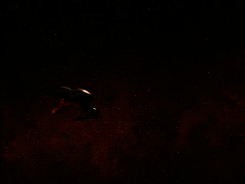
GENERAL BEHAVIOR
Prowlers are curious, sneaky, and prone to trouble. They love to explore the galaxy and quickly become quite skilled at making the best of their natural and artificial stealth to explore potentially dangerous areas. Though bred for aggression, obedience, and cleverness, most Prowlers are easily excitable, unruly, and either unsure of themselves or vastly overconfident. Should a large population of Prowlers breed in the wild, it is unknown what sort of behavior they would develop. Basic, podding behavior is anticipated with a group wandering from planet to planet and system to system as they search for radiation sources to feed from and explore the galaxy as Lygria explore the oceans of Argya IV. They are also expected to starburst to nearby systems when threatened or startled, similar to the behavior Lygria exhibit when they flee ocean waters and take to the sky when threatened.
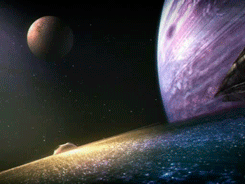
HISTORY
Prowler-class Mesen'laras are an artificial species created by Mandal Hypernautics' genetics company, Auron Helix with the help of Qellan bioengineer Skek'zus Quall, Yuuzhan Vong Shaper [member="Aynea Savan Xyhn"], and recovered Charon data. The species is birthed on the world of Ord Cestus where a population of around 8-24 is maintained in Kibo Lake under the ownership of Mandal Hypernautics and guarded by Hyperion Security. While some members of the species are allowed to grow to maturity naturally in Kibo Lake, two individuals a year are transported to the orbiting Mesen'yai Station to undergo a rapid growth and augmentation process into Corvette grade warships. To date, only a handful of Prowlers have been augmented into fully bio-mechanical warships and none of the calves have reached adult sizes through natural growth and maturation. To date, none have reached sexual maturity, though zoological and bioengineering experts alike anxiously look forward to observing the future developments of this species.
DEVELOPMENTAL HISTORY
During a Hyperion Mining operation on Wayland, an ancient catacomb was discovered deep underground. Mandal Hypernautics representatives investigated the site and determined that the location was part of a larger complex that had long ago been destroyed by seismic activity. They were, however, able to uncover a large amount of data from the ancient and (presumed) extinct Charon. This data was quickly secured and transferred to the Mandal Hypernautics headquarters on Mandalore.
After much review of the relevant technology, and struggling to understand it himself, Mandal Hypernautics CEO Rygel Larraq realized that he had finally uncovered a suitable project for the failing Auron Helix subsidiary. But before they could get started, he would need to hire an expert.
Following the mantra of “Every man has his price,” Rygel Larraq eventually obtained the services of a surviving Qellan. Setting up shop on the Auron Helix research facility on Ord Cestus, Larraq and his new business partner got to work at decoding the recovered data. The Qella was already an expert at genetic manipulation, but constantly found his grasp and understanding to be challenged by the information stored in the archive.
Taking a gamble on what was beginning to look like a promising project, Rygel Larraq shunted money and resources into the research facility. Quadrupling the security and doubling the staff and equipment, dozens of teams quickly poured over recorded genetic sequences and wrote numerous computer programs to simulate the effects the new genetic codes would have on existing species.
While the support teams focused on studying the genetic algorithms provided by the Qellan and the decoded Charon data, the Qellan himself set to work exploring distant worlds. He was on a mission to find the perfect host species. A natural predator, aquatic in nature, naturally developed defense and attack measures, and... most importantly... a malleable genetic structure.
It was on Argyra IV that he found it. A massive, winged serpent creature that inhabited the world's oceans. The creature was massive, naturally reaching lengths that met and exceeded the expectations of his employer. It was capable of unrivaled agility within the deep ocean waters and capable of leaping into the sky where it would glide for several kilometers at a time. The creature was not quite the predator that he had desired, but it was perfect by every other standard. It naturally grew a thick, armored carapace over the core of its body, had the keen senses required to locate thousands upon thousands of microscopic organisms as it moved at high speeds, and the DNA of the creature was... adequately malleable.
Teams of hunters, soldiers, engineers, and scientists were brought to Argyra IV by Mandal Hypernautics in an attempt to catch one of the massive creatures. A massive Connestoga Freighter, property of Mandal Hypernautics, had its three primary hangers heavily modified to support aquatic life and was brought into low orbit over the planet. At this point, a pair of Keldabe-class Battleships were brought into the atmosphere of the planet and placed into a holding pattern a kilometer over the surface of the ocean. Audial sensors were used to locate and track a pod of Lygria until they were nearly below the battleships. Siezmic 7 Charges, equipped with timed detonators, were then released into the oceans and allowed to plummet several kilometers before detonating.
The shockwave was devastating. Trillions of aquatic lifeforms were killed by the explosions and millions more were critically injured. But the endeavor had achieved the desired result. The pod of Lygria, in a panic, raced to the surface of the ocean and leaped high into the sky. Quickly, a team of scientists identified the smallest sexually mature female in the pod and the two battleships raced to intercept the soaring creature. Multiple heavy tractor beams were locked onto the aquatic animal and the two battleships dragged the creature from its home and into the waiting cargo bays of the Connestoga, already filled with ocean water.
Eventually released into a massive lake on Ord Cestus, the Lygria would receive the name 'Alor'buir' by Larraq and become the prolonged subject of much experimentation. Auron Helix scientists would use advanced computers to structure and map the genetic code of Alor'buir's DNA. The project lead, Skek'zus Quall, then set to work applying his knowledge of genetic engineering and Charon technology to the creature's genetic code. These modifications were tested on computer simulations again and again until the final code was engineered to produce a creature to Rygel Larraq's specifications.
Almost, anyways.
It was at this point that Skek'zus Quall admitted reaching the limits of his own capabilities and requested that the company bring in a third party. The problem encountered by Skek'zus Quall was that he could not restructure the complex internal organs to appropriately create sustainable propulsion for the craft in vacuum, nor was he able to engineer the complex weaponry and support systems desired for the project. Renowned for their extensive mastery of bio-technology and the complexity of their coral ships, a unanimous decision was made to seek out the help of a neutral Yuuzhan Vong Shaper.
This would prove to be neither easy or cheap as Rygel Larraq attempted to acquire the services of a woman known as [member="Aynea Savan Xyhn"]. Eventually agreeing to the increasing offers from Larraq, Ashe would not only provide the genetic coding to transform the organs of the creature into biot-like structures, but she would encode into the creature the ability to naturally grow these structure without the assistance of individual shapers participating at each construction. Without such engineering by Aynea, the creature would never be able to properly reproduce or survive unsupervised.
Deemed a complete success by Larraq, the finished DNA code created by Skek'zus Quall and Aynea was then synthesized and artificially injected into Alor'buir's womb. Artificially inseminated by the Auron Helix scientists, Alor'buir would go on to produce a clutch of twelve calves. The first of their kind, Larraq named each of them and dubbed the species 'Prowlers' for their sleek, predatory appearance. It was briefly suggested to name them Kyramla'tragi, which translates directly to "deadly space fish", but that was immediately rejected.
Patented and protected as Mandal Hypernautics property, the young Prowlers were released into Kibo Lake with appropriate permits being acquired. Their condition and growth was closely monitored by the Auron Helix scientists, but the progress was slow. Too slow for Rygel Larraq. The considerable financial investments had made him anxious for a return. At the very least, he needed a finished project to display to his customers and competitors. As fond as he was of the young Mesen'loras, he needed them to grow up far quicker than they were.
To answer his demands, a new invention was needed. Quickly drafted by Skek'zus Quall and Rygel Larraq with input from the Auron Helix staff, a new type of orbital facility was designed. Dubbed the Mesen'yai Space Station, production began immediately. It took six months for construction to finish on the space station. During that time twelve different re-designs, upgrades, and modifications had been made from the initial plans. The final product, however, was the answer to Rygel Larraq's plans.
In the simplest terms imaginable, the Mesen'yai was the galaxies largest cloning tank. Though its purpose was not to clone. It was a metabolic enhancer and growth accelerator rolled into one massive package. According to the best available estimations, it would be able to age a single Mesen'loras by five years in as little as six months. The creature would spend the entire time in a medically induced, dream-like coma. False memories, training, and indoctrinations would be programmed into the organic brain of the young prowler while it grew. The plan was to grow, train, and condition the creature all at once. The final product was to be glorious and perfect.
Reality proved to be a crude disappointment for Rygel Larraq. He hand picked his favorite Prowler, [member="Naast'ika Laaran"], for the procedure. The Prowler was transported to the orbiting station. The young creature was placed into the massive artificial womb. And the creature spent its next six months growing exponentially in size as its memories were toyed with. As if that were not enough, upon waking the creature was immediately put to sleep once more while Mandal Hypernautics engineers surgically augmented its body with cybernetic armor, weaponry, and support systems. When the young creature next woke, it was covered in a strange metal, its mind was linked to a thousand components that it was not born with, dozens of smaller creatures crawled through its insides, and it found itself being compelled to follow the commands of a small human that it did not recognize.
Rygel Larraq reassured Naast'ika that everything was alright. Naast'ika remembered Larraq. Naast'ika remembered playing in warm waters while Larraq watched and talked to him. He remembered Skek'zus as well. Both would talk to him and his pod while they played in the warm water. But now there was empty black waters. Larraq told Naast'ika that they had made him strong. He told Naast'ika that they were both proud of him and that he had done well by enduring the procedure. They told him that the rest of his pod would be joining him soon.
Naast'ika proved to be confused and irritable by his new condition, but eventually calmed and learned to enjoy his augmentations and crew. He saw them as playmates and members of his 'pod'. Similarly, Naast'ika learned to enjoy playing with other Mandal Hypernautics ships and enjoyed the mock war-games that they played. As time went on, Naast'ika would grow to look forward to fighting and being brave for his crew and commander. As time went by, Naast'ika proved to be everything Rygel Larraq had desired from the project and was proudly displayed for the maracle of engineering that he was.
Naast'ika would prove to remain slightly moody and emotional though. Skek'zus advised Larraq that Mesen'loras allowed to grow naturally would be more emotionally stable than those rushed into 'production', but that the emotional instability would be manageable so long as patient commanders were placed in charge of each Prowler.
While Naast'ika paved the way for the Mesen'loras project, others of his kind were placed in the Mesen'yai Space Station one at a time. Each underwent the cybernetic augmentation process that took nearly as long as the growth acceleration, and each received the same conditioning. Alor'buir would remain in Kibo Lake with the five juvenile Lygria and her remaining offspring, feeding off of the natural microorganisms and heat provided by the lake. Once every other year, a new clutch of Prowler Mesen'loras would be artificially fertilized into Alor'buir, with a total of around 18 such creatures living in the lake at any one time.
After much review of the relevant technology, and struggling to understand it himself, Mandal Hypernautics CEO Rygel Larraq realized that he had finally uncovered a suitable project for the failing Auron Helix subsidiary. But before they could get started, he would need to hire an expert.
Following the mantra of “Every man has his price,” Rygel Larraq eventually obtained the services of a surviving Qellan. Setting up shop on the Auron Helix research facility on Ord Cestus, Larraq and his new business partner got to work at decoding the recovered data. The Qella was already an expert at genetic manipulation, but constantly found his grasp and understanding to be challenged by the information stored in the archive.
Taking a gamble on what was beginning to look like a promising project, Rygel Larraq shunted money and resources into the research facility. Quadrupling the security and doubling the staff and equipment, dozens of teams quickly poured over recorded genetic sequences and wrote numerous computer programs to simulate the effects the new genetic codes would have on existing species.
While the support teams focused on studying the genetic algorithms provided by the Qellan and the decoded Charon data, the Qellan himself set to work exploring distant worlds. He was on a mission to find the perfect host species. A natural predator, aquatic in nature, naturally developed defense and attack measures, and... most importantly... a malleable genetic structure.
It was on Argyra IV that he found it. A massive, winged serpent creature that inhabited the world's oceans. The creature was massive, naturally reaching lengths that met and exceeded the expectations of his employer. It was capable of unrivaled agility within the deep ocean waters and capable of leaping into the sky where it would glide for several kilometers at a time. The creature was not quite the predator that he had desired, but it was perfect by every other standard. It naturally grew a thick, armored carapace over the core of its body, had the keen senses required to locate thousands upon thousands of microscopic organisms as it moved at high speeds, and the DNA of the creature was... adequately malleable.
Teams of hunters, soldiers, engineers, and scientists were brought to Argyra IV by Mandal Hypernautics in an attempt to catch one of the massive creatures. A massive Connestoga Freighter, property of Mandal Hypernautics, had its three primary hangers heavily modified to support aquatic life and was brought into low orbit over the planet. At this point, a pair of Keldabe-class Battleships were brought into the atmosphere of the planet and placed into a holding pattern a kilometer over the surface of the ocean. Audial sensors were used to locate and track a pod of Lygria until they were nearly below the battleships. Siezmic 7 Charges, equipped with timed detonators, were then released into the oceans and allowed to plummet several kilometers before detonating.
The shockwave was devastating. Trillions of aquatic lifeforms were killed by the explosions and millions more were critically injured. But the endeavor had achieved the desired result. The pod of Lygria, in a panic, raced to the surface of the ocean and leaped high into the sky. Quickly, a team of scientists identified the smallest sexually mature female in the pod and the two battleships raced to intercept the soaring creature. Multiple heavy tractor beams were locked onto the aquatic animal and the two battleships dragged the creature from its home and into the waiting cargo bays of the Connestoga, already filled with ocean water.
Eventually released into a massive lake on Ord Cestus, the Lygria would receive the name 'Alor'buir' by Larraq and become the prolonged subject of much experimentation. Auron Helix scientists would use advanced computers to structure and map the genetic code of Alor'buir's DNA. The project lead, Skek'zus Quall, then set to work applying his knowledge of genetic engineering and Charon technology to the creature's genetic code. These modifications were tested on computer simulations again and again until the final code was engineered to produce a creature to Rygel Larraq's specifications.
Almost, anyways.
It was at this point that Skek'zus Quall admitted reaching the limits of his own capabilities and requested that the company bring in a third party. The problem encountered by Skek'zus Quall was that he could not restructure the complex internal organs to appropriately create sustainable propulsion for the craft in vacuum, nor was he able to engineer the complex weaponry and support systems desired for the project. Renowned for their extensive mastery of bio-technology and the complexity of their coral ships, a unanimous decision was made to seek out the help of a neutral Yuuzhan Vong Shaper.
This would prove to be neither easy or cheap as Rygel Larraq attempted to acquire the services of a woman known as [member="Aynea Savan Xyhn"]. Eventually agreeing to the increasing offers from Larraq, Ashe would not only provide the genetic coding to transform the organs of the creature into biot-like structures, but she would encode into the creature the ability to naturally grow these structure without the assistance of individual shapers participating at each construction. Without such engineering by Aynea, the creature would never be able to properly reproduce or survive unsupervised.
Deemed a complete success by Larraq, the finished DNA code created by Skek'zus Quall and Aynea was then synthesized and artificially injected into Alor'buir's womb. Artificially inseminated by the Auron Helix scientists, Alor'buir would go on to produce a clutch of twelve calves. The first of their kind, Larraq named each of them and dubbed the species 'Prowlers' for their sleek, predatory appearance. It was briefly suggested to name them Kyramla'tragi, which translates directly to "deadly space fish", but that was immediately rejected.
Patented and protected as Mandal Hypernautics property, the young Prowlers were released into Kibo Lake with appropriate permits being acquired. Their condition and growth was closely monitored by the Auron Helix scientists, but the progress was slow. Too slow for Rygel Larraq. The considerable financial investments had made him anxious for a return. At the very least, he needed a finished project to display to his customers and competitors. As fond as he was of the young Mesen'loras, he needed them to grow up far quicker than they were.
To answer his demands, a new invention was needed. Quickly drafted by Skek'zus Quall and Rygel Larraq with input from the Auron Helix staff, a new type of orbital facility was designed. Dubbed the Mesen'yai Space Station, production began immediately. It took six months for construction to finish on the space station. During that time twelve different re-designs, upgrades, and modifications had been made from the initial plans. The final product, however, was the answer to Rygel Larraq's plans.
In the simplest terms imaginable, the Mesen'yai was the galaxies largest cloning tank. Though its purpose was not to clone. It was a metabolic enhancer and growth accelerator rolled into one massive package. According to the best available estimations, it would be able to age a single Mesen'loras by five years in as little as six months. The creature would spend the entire time in a medically induced, dream-like coma. False memories, training, and indoctrinations would be programmed into the organic brain of the young prowler while it grew. The plan was to grow, train, and condition the creature all at once. The final product was to be glorious and perfect.
Reality proved to be a crude disappointment for Rygel Larraq. He hand picked his favorite Prowler, [member="Naast'ika Laaran"], for the procedure. The Prowler was transported to the orbiting station. The young creature was placed into the massive artificial womb. And the creature spent its next six months growing exponentially in size as its memories were toyed with. As if that were not enough, upon waking the creature was immediately put to sleep once more while Mandal Hypernautics engineers surgically augmented its body with cybernetic armor, weaponry, and support systems. When the young creature next woke, it was covered in a strange metal, its mind was linked to a thousand components that it was not born with, dozens of smaller creatures crawled through its insides, and it found itself being compelled to follow the commands of a small human that it did not recognize.
Rygel Larraq reassured Naast'ika that everything was alright. Naast'ika remembered Larraq. Naast'ika remembered playing in warm waters while Larraq watched and talked to him. He remembered Skek'zus as well. Both would talk to him and his pod while they played in the warm water. But now there was empty black waters. Larraq told Naast'ika that they had made him strong. He told Naast'ika that they were both proud of him and that he had done well by enduring the procedure. They told him that the rest of his pod would be joining him soon.
Naast'ika proved to be confused and irritable by his new condition, but eventually calmed and learned to enjoy his augmentations and crew. He saw them as playmates and members of his 'pod'. Similarly, Naast'ika learned to enjoy playing with other Mandal Hypernautics ships and enjoyed the mock war-games that they played. As time went on, Naast'ika would grow to look forward to fighting and being brave for his crew and commander. As time went by, Naast'ika proved to be everything Rygel Larraq had desired from the project and was proudly displayed for the maracle of engineering that he was.
Naast'ika would prove to remain slightly moody and emotional though. Skek'zus advised Larraq that Mesen'loras allowed to grow naturally would be more emotionally stable than those rushed into 'production', but that the emotional instability would be manageable so long as patient commanders were placed in charge of each Prowler.
While Naast'ika paved the way for the Mesen'loras project, others of his kind were placed in the Mesen'yai Space Station one at a time. Each underwent the cybernetic augmentation process that took nearly as long as the growth acceleration, and each received the same conditioning. Alor'buir would remain in Kibo Lake with the five juvenile Lygria and her remaining offspring, feeding off of the natural microorganisms and heat provided by the lake. Once every other year, a new clutch of Prowler Mesen'loras would be artificially fertilized into Alor'buir, with a total of around 18 such creatures living in the lake at any one time.
Notable Player-Characters: [member="Naast'ika Laaran"]
Notable Non-Player-Characters: None yet
Intent: To create an awesome Bio-Mechanical living ship
Development Thread: Mesen'loras Campaign
Act 01: What once was lost...
Act 02: What the feth am I reading?
Act 03: Work Opportunity
Act 04: I need an adult
Act 05: Understanding gibberish
Act 06: Needle in a haystack
Act 07: I need a sample
Act 08: Engineering Perfection
Act 09: Out of our League
Act 10: The first of many
Act 11: BORN TO BE WILD
Act 12: Finishing touches
Act 02: What the feth am I reading?
Act 03: Work Opportunity
Act 04: I need an adult
Act 05: Understanding gibberish
Act 06: Needle in a haystack
Act 07: I need a sample
Act 08: Engineering Perfection
Act 09: Out of our League
Act 10: The first of many
Act 11: BORN TO BE WILD
Act 12: Finishing touches








